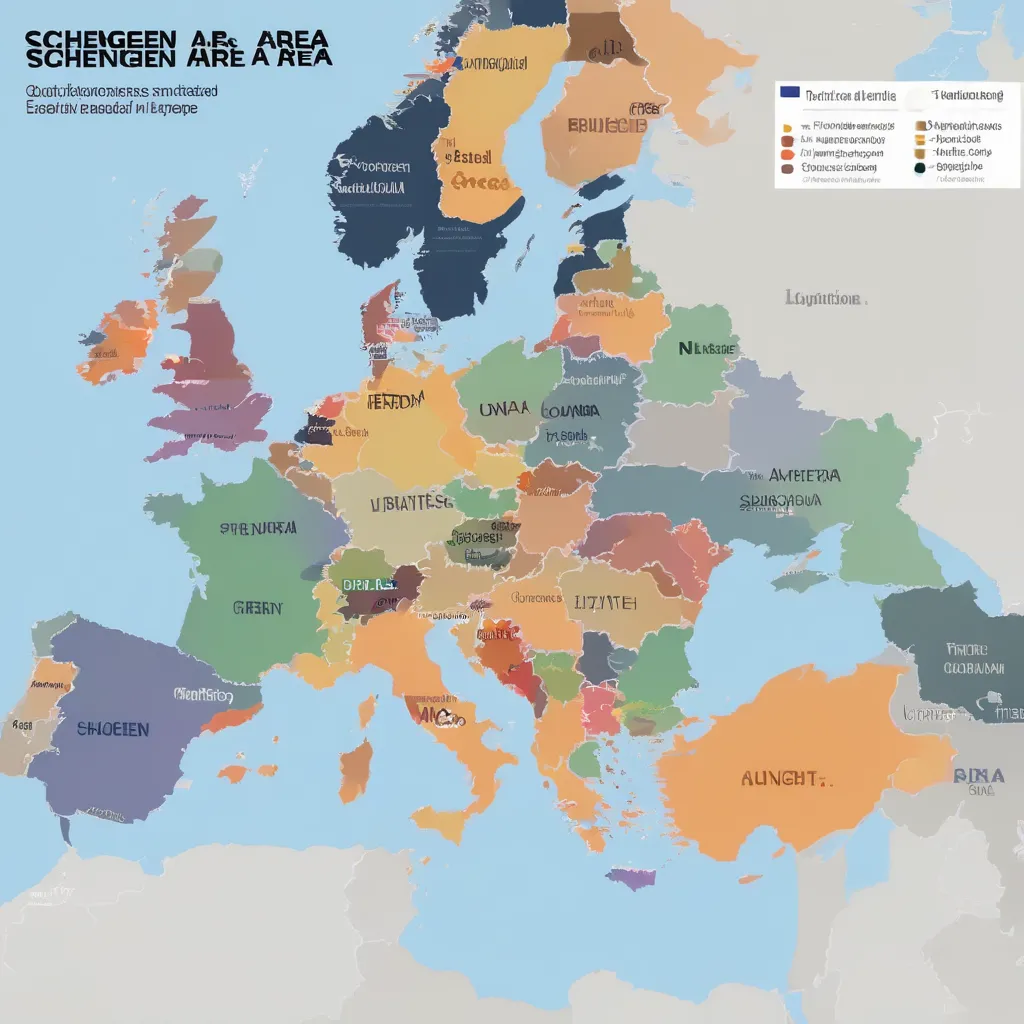Planning an exciting European adventure and wondering about the dreaded visa paperwork? You might have heard of ESTA and wondered, “Do I Need Esta To Travel To Europe?” Well, you’re in the right place! Let me clear up any confusion and ensure your trip planning is smooth sailing.
Understanding ESTA and the Schengen Zone
Here’s the thing: ESTA (Electronic System for Travel Authorization) is not for Europe. It’s specifically for travelers visiting the United States under the Visa Waiver Program.
Europe, however, largely operates under the Schengen Agreement. This agreement allows citizens of many countries (like the US, Canada, Australia) to travel freely between its 27 member states without a visa for tourism or business trips up to 90 days. Think of it like a free pass to explore iconic destinations, from the Eiffel Tower in Paris to the Colosseum in Rome, without the hassle of individual visas!
Imagine this: You’re strolling along the canals of Amsterdam, indulging in delicious Belgian waffles in Brussels, and then hopping on a train to witness the breathtaking Swiss Alps, all without worrying about visa applications for each country. That’s the beauty of the Schengen Agreement!
 Schengen Zone Map
Schengen Zone Map
Do I need a visa for Europe then?
That depends on your nationality and the specific European countries you plan to visit. While the Schengen Agreement covers a significant portion of Europe, not all European countries are part of it. For example, if you’re planning a trip to the UK (which is no longer part of the EU), you’ll need a separate visa.
The best way to know for sure is to check the specific visa requirements for your nationality on your government’s official travel website or the website of the embassy or consulate of the country you plan to visit.
Pro Tip: Always double-check the visa regulations well in advance of your intended travel dates to avoid any last-minute surprises.
Planning Your European Escapade: Tips and Tricks
Planning a trip to Europe can be exciting, but it requires some preparation. Here are some tips to make your journey smoother:
- Passport Validity: Ensure your passport is valid for at least six months beyond your intended stay in Europe.
- Travel Insurance: Medical expenses can be high in Europe. It’s highly recommended to have travel insurance that covers medical emergencies, trip cancellation, and other unforeseen events.
- Currency Exchange: While Euros are widely accepted in the Schengen Area, it’s a good idea to have some local currency on hand for smaller purchases or if you’re traveling to countries outside the Eurozone. Consider checking out our article on “Where to get Euros before traveling” for helpful tips.
- Transportation: Europe has an excellent transportation network. Consider train travel for scenic routes and efficient connections between cities.
- Language: Learning a few basic phrases in the local language can go a long way in enhancing your travel experience.
FAQs about Traveling to Europe
Q: How much money do I need for a trip to Europe?
A: The cost of your trip depends on your travel style, destinations, and duration. You can find helpful budgeting tips in our “How much is travel?” article.
Q: What if I want to stay in Europe for longer than 90 days?
A: If you’re planning an extended stay, you’ll likely need to apply for a long-stay visa or a residence permit. The requirements vary depending on the country.
Q: Is it safe to travel solo in Europe?
A: Europe is generally considered safe for solo travelers, but always exercise caution and be mindful of your surroundings. You can find more tips on solo travel in our “How to travel solo” guide.
Q: When is the best time to travel to Spain?
A: Discover the best time to visit Spain and uncover its hidden gems by exploring our dedicated article: “When to travel to Spain.”
 Eiffel Tower at Sunset
Eiffel Tower at Sunset
Ready to Embark on Your European Journey?
Remember, ESTA is for the US, not Europe! Understanding the Schengen Agreement and visa requirements for your nationality is crucial for a hassle-free trip. By planning, you can focus on soaking in the continent’s rich history, diverse cultures, and stunning landscapes.
Have you traveled to Europe before? Share your experiences and tips in the comments below! And don’t forget to explore our website TRAVELCAR.edu.vn for more travel inspiration and guidance.

